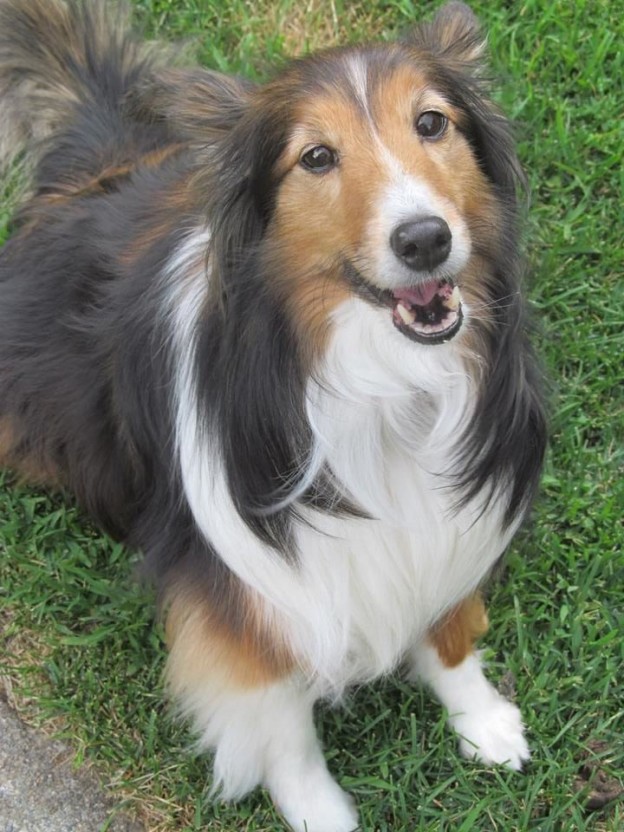
Finding the right class and instructor or the right private trainer to work with you and your dog can be just as difficult as finding the right sports team and coach or the right private music teacher for your child. Every dog and owner combination will be different, with different needs and goals, with widely varied skills and temperaments. Every instructor or trainer will be an individual, too, no matter what methods they employ. They may teach the same subjects, but they’ll each do it in his or her own way. You are looking for the best fit possible for you and for your dog. Finding that best fit isn’t always easy.
It’s relatively simple to check out a class situation.
Call or e-mail the training facility to ask a single question: “May I come and watch some classes?” There will be stipulations, of course; you will probably be asked not to bring your dog. That makes sense for the facility and for you. You will be there to watch the classes, not to manage your dog.
The only answer that should be acceptable to you is, “Of course! We welcome visitors. Which of our classes would you like to watch, so we can tell the instructors to expect you?” The staffer may add, “We do ask that you hold your questions for after the class, when the instructor will have time to chat with you for a few minutes, if you like. Or call us the next day—that would be fine, too.”
What you want is openness and transparency. Training facilities should welcome your interest. There should be nothing going on in a training class that would not be perfectly acceptable to you or to anyone else watching the class, including a representative from a humane organization. Should you instead be told that the facility’s classes are not open to viewing, you could ask why, though I’ve never heard a reasonable explanation for a “no watching” policy. To me, it means they’ve got something to hide.
What do you say to the facility that doesn’t allow you to watch classes?
I’d strongly suggest that you say, “Thank you. Goodbye,” and hang up.

Checking out a private trainer can be a bit more difficult. The wishes of the students are, in that case, paramount. The trainer may have some students who simply don’t want anyone to watch them work. That could be because they are competitors who don’t want their ideas stolen, or because they’re students who are shy about working in front of anyone they don’t know. I would never fault a trainer for saying, “I wouldn’t mind your watching but I’ll have to get an okay from my student first.” That’s reasonable. However, a trainer who has a cut-and-dried “no watching lessons” policy, period . . . I would not sign up for a lesson without watching several first.
How do you evaluate what you’re seeing when you watch a class or lesson?
Gut feeling may be foremost, especially if you’re not familiar with training methods. Watch the student or students enter the training area. Do they appear relaxed and comfortable, or are they on edge? What about the dogs? Are they relaxed and comfortable? Do they seem excited to be there (overly excited would be relatively normal for a young dog, of course) or are they hanging their heads, recalcitrant, reluctant? Even if you’re inexperienced with dogs, you should be able to recognize a dog that’s unhappy, stressed out, or fearful. Those same reactions from the humans will be easier to see. Do the majority of dogs and people involved look as if they wish they weren’t there?
Watch and listen to the instructor. Is she organized? Does the class or lesson start on time, end on time? Is everything needed for the session ready and waiting? Does the instructor know the names of both the dogs and the people in the class? Are any assistants equally organized, prompt, prepared, and polite? Do they know the dogs’ and peoples’ names? It doesn’t count if the dog/handler teams are called by the dog’s breed: “Line the shepherd up behind the border collie.” You’re looking for a good class atmosphere, where everyone (dogs and humans) feels acknowledged and encouraged.
The most serious red flag that a class or lesson is not going to work for you is this: the trainer or instructor takes a student’s dog away from him or her without asking and performs what can only be called an unnecessary “correction.” For example, in a puppy class, the instructor grabs the leash of a puppy who’s jumping up on its owner—typical puppy behavior, mind you—and hangs the puppy by the leash a foot off the floor. Should that puppy happen to be on a choke chain . . . I would say, walk out. That sort of treatment of dogs is simply not acceptable, even if done by an owner. And done by an instructor as an example to a class of how a “problem” should be solved? It’s criminal, period.
In fact, if you are watching a beginning class and the instructor and assistants are recommending “corrections,” you’re probably in the wrong place. You would have been in the wrong place in that class 30 years ago, but at least then the instructors could say they didn’t know any better. Punitive training methods were the only training methods taught at that time. Now we know better.
We know better and we should be doing better. We simply cannot afford to take the advice of “trainers” who recommend physical punishment like poking, kicking, jerking, or hanging dogs. True, we see that idiotic sort of “training” from very popular entertainers on television, but that doesn’t make it right. Honey Boo Boo’s family are not role models for good parenting, and Cesar Millan is not a role model for good dog training. They are reality TV stars, that’s all. For the trainers and instructors in the trenches, on the front lines of animal training today, the Prime Directive is: first, do no harm.
Watch for signs that punishment is part of this instructor’s or this trainer’s repertoire—choke chains and pinch (prong) collars, “electronic” training collars (shock collars), and the use of terms like “correction,” “wrong,” and “jerk.” There should be no jerks and no jerking in the class you want. Is each dog wearing a collar, head collar, or harness that seems to suit him and his needs, or are all the dogs in the class expected to wear exactly the same mandatory equipment? When the dog does something that the instructor or trainer does not want him to do, what happens? When the dog does something that the instructor or trainer does want him to do, is he rewarded or ignored?
Is the lesson or class boring? Have the dogs lost attention to their handlers? Have handlers lost attention to their dogs? Is one particular exercise repeated over and over, to the point that everyone is fed up and frustrated, because the instructor demands that every dog in the class complete the exercise successfully before anyone else can move on? At the end of the class, do the students and the dogs seem eager to leave, not because they need to get home but because they can’t wait to get out of there? Do the students express camaraderie and stop to visit with each other as they leave? Do you hear positive interactions, happy voices, students encouraging and complimenting each other, or are they still strangers after several weeks? Is the instructor thanked or ignored?
“Audition” more than one class, one trainer, one facility. Contrast and compare. Your gut feeling about what you see and hear is your most important guide to picking the right instructor or trainer for you and for your dog. Until you have seen what’s available, you can’t make a good choice. Invest your time in personal visits to each and every facility in your area that offers the training that you and your dog need.
Next week, what to ask your friends and family who’ve attended the classes or taken the lessons that you’re considering, and what their feedback can tell you.



